Using ocean and weather data to find MH370
27 July 2016
In March 2014, something terrible happened: Malaysia Airlines Flight MH370 vanished with 239 passengers and crew on board. Search crews believed that the plane crashed in the southern Indian Ocean. They have looked hard for the plane off the coast of Australia using boats and planes, but have yet to find it. However, jet parts have washed up on the east coast of Africa and on some islands in the Indian Ocean, providing some clues about what happened to the plane. Eric Jansen, a researcher at the Euro-Mediterranean Center on Climate Change in Italy, and his team have now used a computer model to find out where the plane might have crashed. Their model is the most accurate so far because it uses the location of the jet parts that have already been found, as well as data about currents and winds in the Indian Ocean area over the past couple of years. Using this combination of data makes the model more reliable. These ocean and weather data, some collected using satellites, provide information about how the waves could have carried the plane parts from the crash site to where they were washed up on beaches and found by local people. Eric’s prediction is that the plane could be up to 500km further north than where the search teams are currently looking, in a wide area off the Australian coast. When more washed-up jet parts are discovered, their locations can be added to the model – together with up-to-date ocean and weather data – to help scientists to work out where the missing plane could be. Finding the plane is important not only for the families of those who were on board, but also to better understand what happened and use that knowledge to make airplane travel even more safe than it is today.Find out more
Discuss with your teacher or parents
Satellites can be used to track information about the Earth’s oceans from space. What other information can we collect using Earth-observation satellites? Why is it important? Check the ESA Kids website to find out more: egu.eu/7P68NB.
Eric’s study is an example of how physical oceanography, the study of the water movement in the ocean, can have important real-world applications. For more information about this area of science, check the NASA Earth Science website with the help of your parents or teacher: egu.eu/41XIV7 or watch the oceanography videos on the WatchKnowLearn website: egu.eu/2LPHSO.
Print version
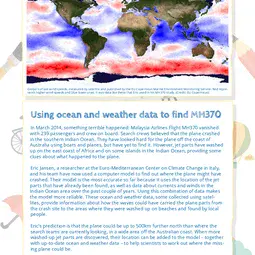
This is a kids' version of the EGU article: 'Using ocean and weather data to find MH370'. It was written by Bárbara Ferreira (EGU Media and Communications Manager), reviewed for scientific content by Eric Jansen (Researcher at Euro-Mediterranean Center on Climate Change, Italy) and Sara Mynott (PhD Student at University of Exeter, UK), and for educational content by Rachel Hay (Geography Teacher, George Heriot’s School, Edinburgh, UK).
Translations
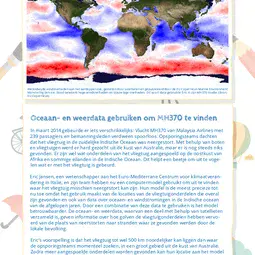
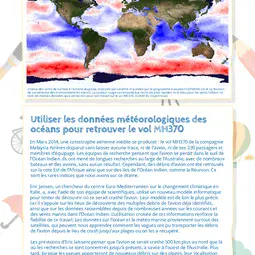
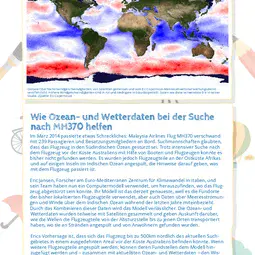
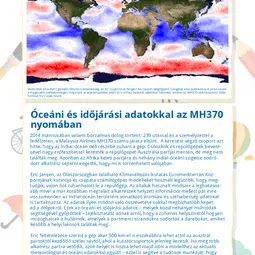
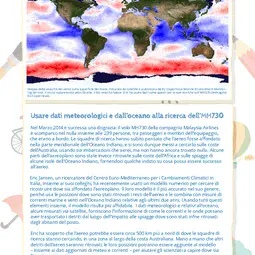
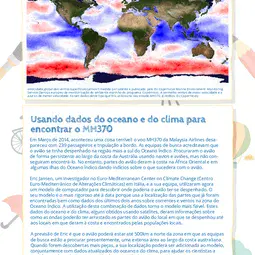
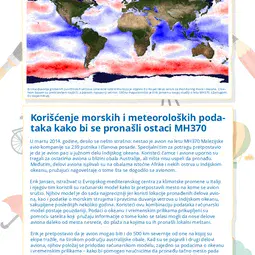
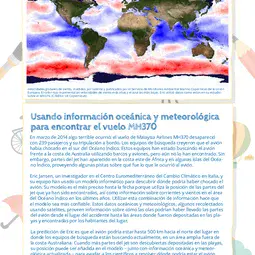
All English-language Planet Press releases are carefully edited, reviewed and proofed, by scientists, educators and EGU staff. Please note that once translated, Planet Press releases receive no further checks from EGU staff. For this reason, we cannot guarantee their accuracy, though we trust the quality of our voluntary translators and are grateful for their work.

